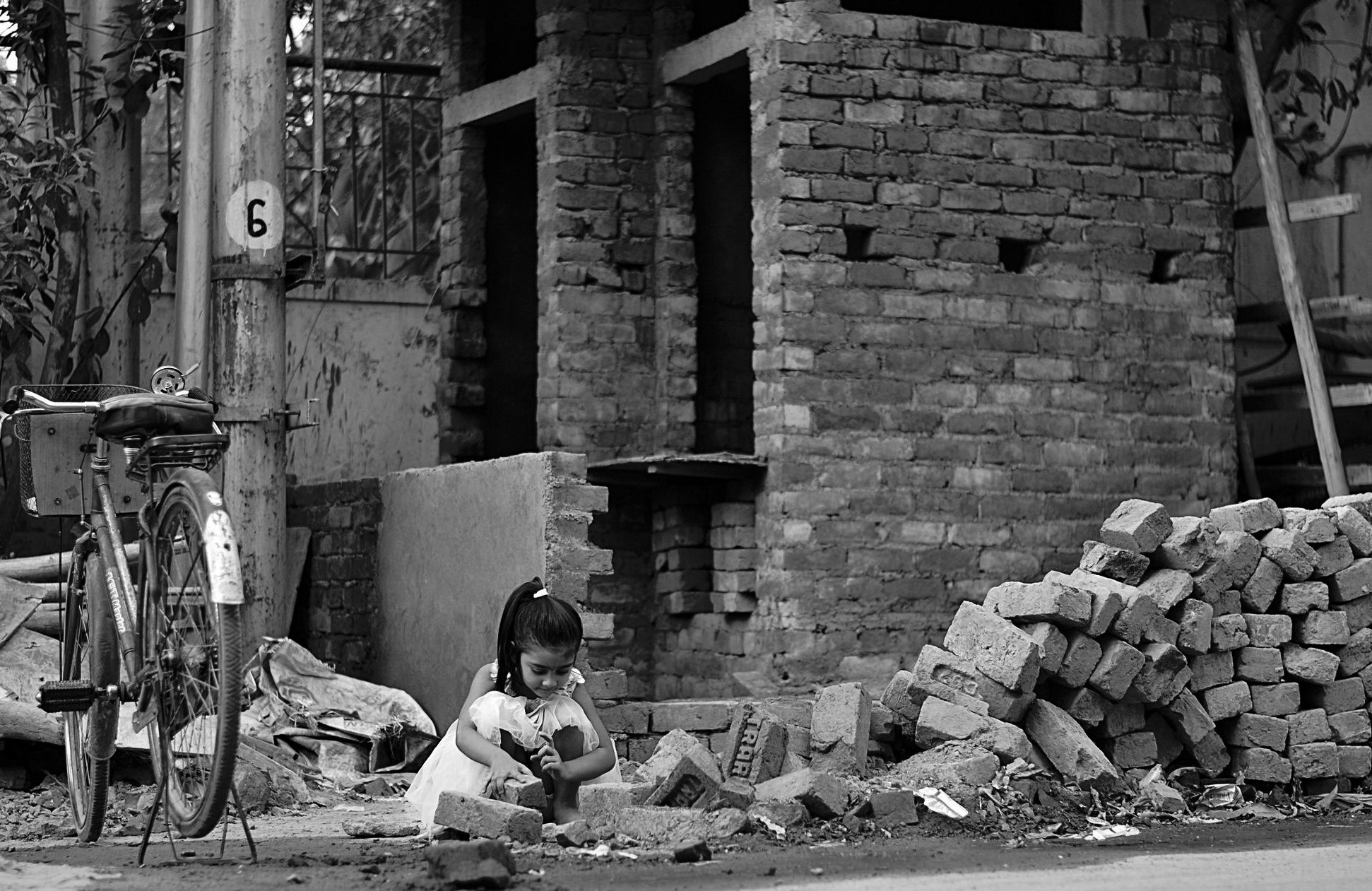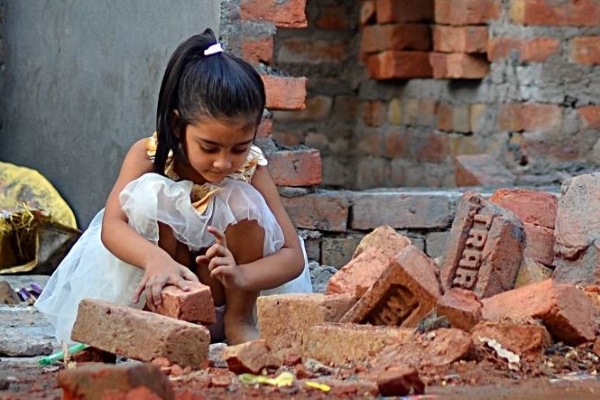[Caveat:This answer reflects how I am thinking about photography, and it is "am thinking" because I may change my mind in the future for the same reasons I did not think this way about it in the past.]
Introduction
I think there are (at least) two ways of shooting with a camera. One way of shooting is to express an artistic vision. Another way is what I think of as "shooting a crime scene". Photographs are often a mixture of the two. That is the case with the original image:
 Original Image
Original Image
A willingness to stretch untruths and half truths that are inherent in making a moment in time permanent and projecting three dimensional space onto a flat page or screen.
A desire to provide evidence that might stand up under cross examination. "Aha! So you admit there was a red bicycle!"
Because the question is about composition, the rest of this answer focuses on the artistic vision or lying in the digital darkroom. It's worth noting that this reflects my current limits on image manipulation. Other people's will vary.
Lines
Most photographs end at hard verticals and horizontals. These form a strong reference lines for the rest of the photograph. The photograph has strong vertical lines. Rotating the image to better align the verticals with the "frame" formed by the edges removes something that is "slightly off."

The price paid in this particular image is at the bicycle. Now it is just barely out of frame. Whether the price is worth paying or not is a matter of opinion.
Luminance
Looking at the image in black and white is a way to examine the effect of relative brightness on composition. This helps when applying the digital darkroom equivalent of dodging and burning. This is the rotated image in monochrome:

The most important part of the story is the little girl's fancy white dress. It's clearly the core element of the moment the photographer captured. Unfortunately, it is gray (the brightest element in the original image is the sky through the trees). It cries out for burning. 1

Once the girl's dress is bright, what should be darker? To me, pretty much everything that is darker than the grey point. The resulting image is a "darker print." The limiting element I used is the grey concrete slab behind the girl relative to her white dress, dark hair, and medium skin tone.

I like how it affects the color image, other people may not. T

Cropping
To me, the right edge of the image contains compositional noise. The diagonal board does not reinforce anything. The horizontal boards don't add anything either. There's nothing interesting there, so it can be cropped out 2.

I'm inclined to push it farther and treat the bicycle and sign and trees as compositional noise. My intuition is that this is pretty much what caught the photographer's eye intially. The square format is also more consistent with the strong verticals than the original landscape format. 3

An alternate crop based on @mattdm's without rotation and to emphasize horizontality.

Advice
- Trust your artistic vision. The original image captures a brilliant moment. The use of yellow highlights (dress/bag/sign) is awesome.
- Push the vision in the digital darkroom to the limit of untruth and half-truth that you are willing to live with.
Notes
1] Technical note: dodging and burning were done with Darktable's "zone system" tool. Burning was done with a mask. Dodging was done globally based on luminance.
2] Technical note: The crop was made freehand rather than to a predetermined proportion.
3] and I like squares (maybe because my first camera used 126 cartridges).




















